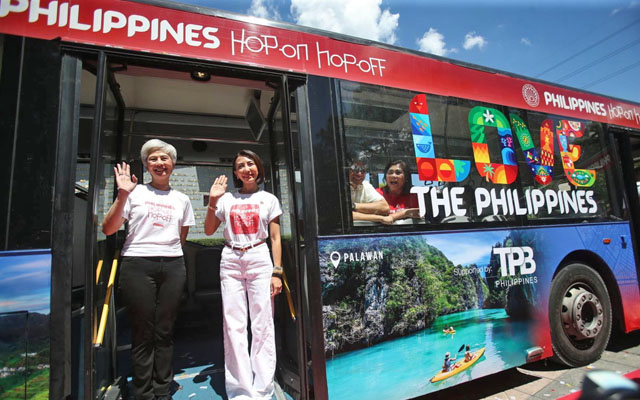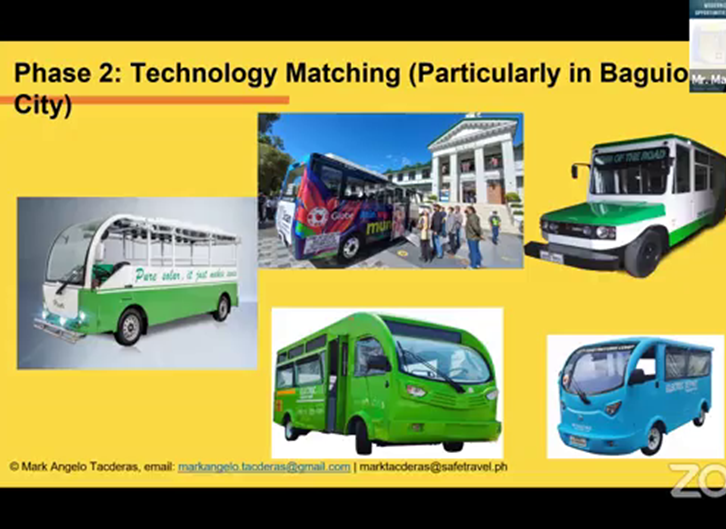Transit Advertising Philippines: An Innovative Method to Market
Transit Advertising Philippines: An Innovative Method to Market
Blog Article
How Transit Advertising And Marketing Can Change Mass Transit Spaces Into Dynamic Advertising And Marketing Operatings Systems
Transit marketing holds significant capacity to redefine mass transit rooms into vibrant advertising systems that inform and engage. By utilizing cutting-edge styles such as electronic displays and interactive stands, brand names can not only reach a varied target market but additionally enhance the general commuter experience. This method develops an unique chance for brands to get in touch with customers in a setting that is frequently ignored. As we check out the multifaceted advantages and progressing techniques of transportation advertising, it raises the concern of how this transformation could redefine our communications with both brand names and the urban setting.
Benefits of Transit Marketing

In addition, transit marketing is very economical contrasted to standard media. It enables advertisers to attain high perceptions at lower prices, maximizing roi. The restricted audience of commuters provides an opportunity for brands to communicate their messages to people that are usually responsive throughout their traveling times.
Moreover, the vibrant nature of transit advertising and marketing enables projects to be upgraded frequently, making sure that messaging remains pertinent and prompt. This versatility can be vital in responding to market fads or promotional occasions, maintaining the brand top-of-mind for customers. Finally, the pervasive presence of transit marketing contributes to brand name recall; repeated exposure within acquainted traveling contexts enhances brand name recognition and cultivates consumer commitment, eventually driving sales and boosting brand online reputation.
Kinds Of Transit Advertising
Mass transit systems supply different formats for advertising and marketing, each providing to various marketing techniques and target market engagement techniques. One famous kind is outside bus and train covers, which cover the entire car and develop a mobile signboard effect, enabling high visibility in metropolitan atmospheres. These covers can record focus as they traverse active streets, reaching a varied audience.
One more prominent format is indoor advertising and marketing, that includes posters, digital screens, and ads on transportation seats. These positionings involve guests during their trip, enhancing brand messaging in a restricted space. Digital displays, specifically, supply the benefit of dynamic content, enabling advertisers to update messages in real-time.
Terminal advertising is likewise significant, including posters, banners, and interactive booths within transit terminals. These ads leverage foot traffic and can target details demographics based on place.
Finally, marketing collaborations with transportation authorities can lead to one-of-a-kind projects, such as themed transportation experiences or occasions, enhancing the overall interaction with commuters. Each kind of transportation marketing offers distinct advantages, permitting brands to customize their technique to efficiently reach their target market within the general public transportation ecological community.
Involving Commuters Properly
Travelers are significantly inundated with advertising and marketing messages during their everyday travels, making it necessary for brands to engage them in cutting-edge ways. To record focus in this congested space, advertisers need to focus on creativity and significance. Utilizing captivating visuals and concise messaging can dramatically boost the probability of involvement.
Interactive aspects, such as QR codes or increased reality functions, can additionally change fixed advertisements into immersive experiences, fostering a deeper connection with the audience. Brands must focus on addressing commuters' needs and passions, customizing messages to resonate with their way of living, whether with promotions for regional companies or solutions developed to enhance their commuting experience.
In addition, timing plays a vital duty; tactically positioning ads during top travelling hours can optimize visibility and impact. Involving commuters properly also includes leveraging social media sites combination, permitting passengers to share their experiences or promotions directly from transit systems, thus amplifying brand name reach.
Basically, efficient involvement depends upon comprehending the commuter journey and creating engaging, interactive, and pertinent advertising and marketing experiences that not only record focus but additionally drive action and commitment. By doing so, brands can transform mass transit into a dynamic advertising platform that resonates with its target market.

Measuring Advertising Influence
Just how can brand names precisely evaluate the efficiency of their marketing campaign en route settings? Gauging the influence of transit advertising calls for a diverse approach that combines qualitative and quantitative metrics. One prevalent technique is tracking interaction through mobile analytics, where brands can evaluate foot web traffic patterns and app communications previously, throughout, and after campaigns.
Studies can supply important understandings right into brand recall and consumer view, permitting brands to assess how well their messages resonate with commuters. Furthermore, monitoring social media engagement associated to particular projects can expose changes in public perception and brand name discussion.

In addition, collaborating with transit firms can boost measurement accuracy, as they frequently possess thorough demographic data on ridership trends. By integrating these approaches, brands can establish an Web Site extensive understanding of their advertising effectiveness, guaranteeing that their campaigns not just reach but likewise impact their this link target audiences successfully.
Future Fads in Transit Marketing
A considerable change is prepared for in transportation advertising as technical innovations and altering consumer actions reshape the landscape. Transit Advertising Philippines. The assimilation of digital screens and multimedias is anticipated to enhance interaction, permitting brand names to provide dynamic content that resonates with varied audiences. As public transport systems welcome smart innovation, marketers will certainly leverage real-time information analytics to tailor messages based on traveler demographics and habits
Furthermore, boosted truth (AR) is positioned to transform the way commuters interact with advertisements. By offering immersive experiences, AR can change an ordinary journey right into an engaging story that catches focus and fosters brand commitment. This advancement will likely motivate marketers to produce even more experiential projects that drive consumer communication.
Sustainability is another crucial trend affecting transportation marketing. As ecological awareness grows, brands will significantly look for to align with eco-friendly methods, using lasting products and advertising environment-friendly campaigns within their projects.
Conclusion
Finally, transportation advertising and marketing supplies substantial benefits by enhancing brand name visibility and engaging a restricted audience. Via different styles, such as exterior covers and electronic screens, it changes public transportation right into a why not find out more lively marketing system. Efficient interaction approaches and robust dimension methods further amplify its effect. As patterns progress, the capacity for innovative communications between travelers and brands is poised to expand, making sure that transit marketing stays a vital component of modern advertising techniques.
Transit marketing holds substantial potential to redefine public transport rooms right into dynamic marketing systems that involve and notify. The prevalent existence of transit advertising and marketing adds to brand name recall; repeated exposure within acquainted traveling contexts strengthens brand awareness and fosters customer commitment, eventually enhancing and driving sales brand name track record.
Exactly how can brands properly analyze the efficiency of their marketing projects in transportation environments?In verdict, transportation advertising offers substantial advantages by enhancing brand name visibility and involving a captive target market. Transit Advertising Philippines. As patterns develop, the possibility for ingenious interactions in between brands and travelers is positioned to grow, making certain that transit advertising and marketing remains a vital part of modern advertising and marketing techniques
Report this page